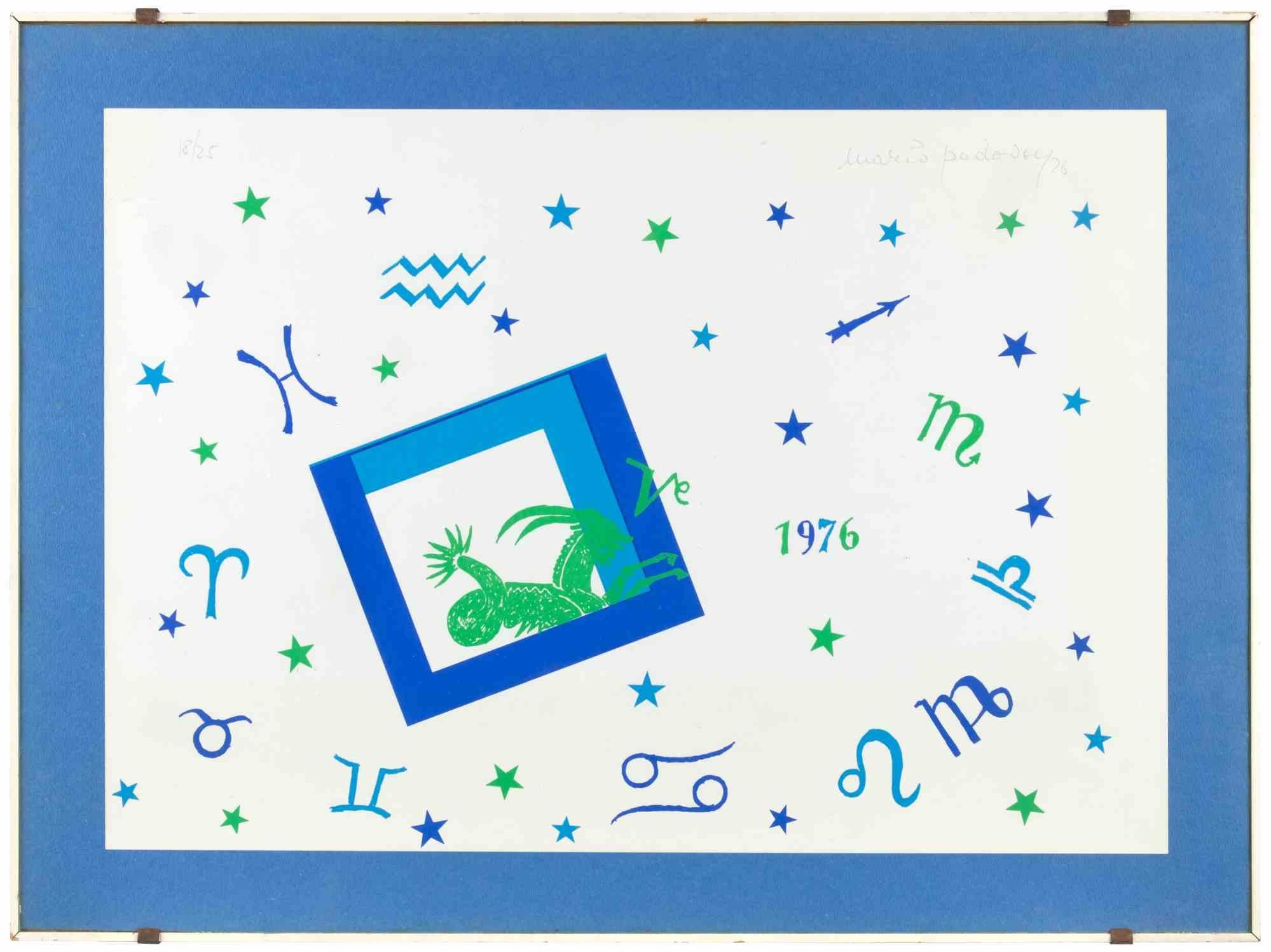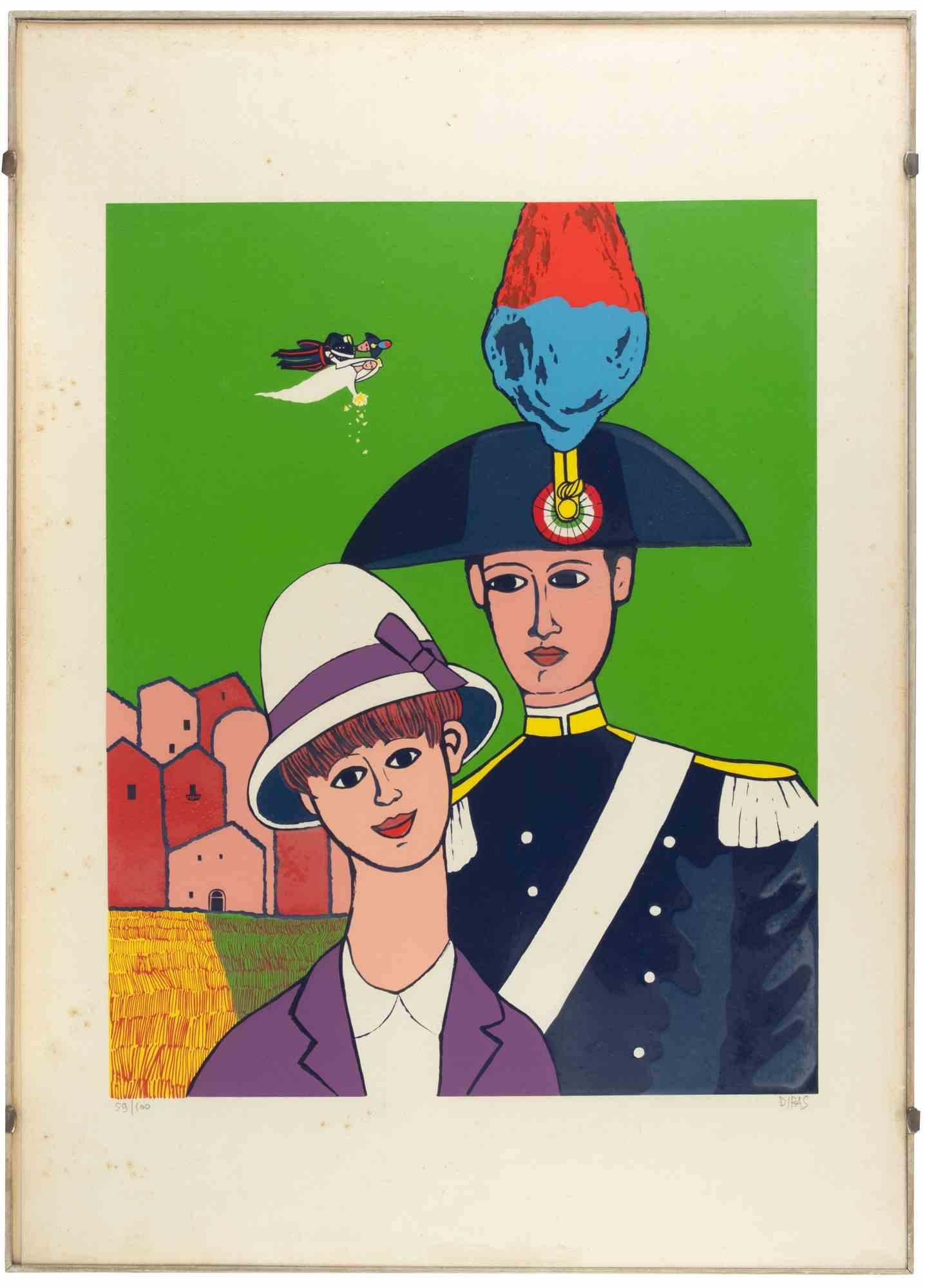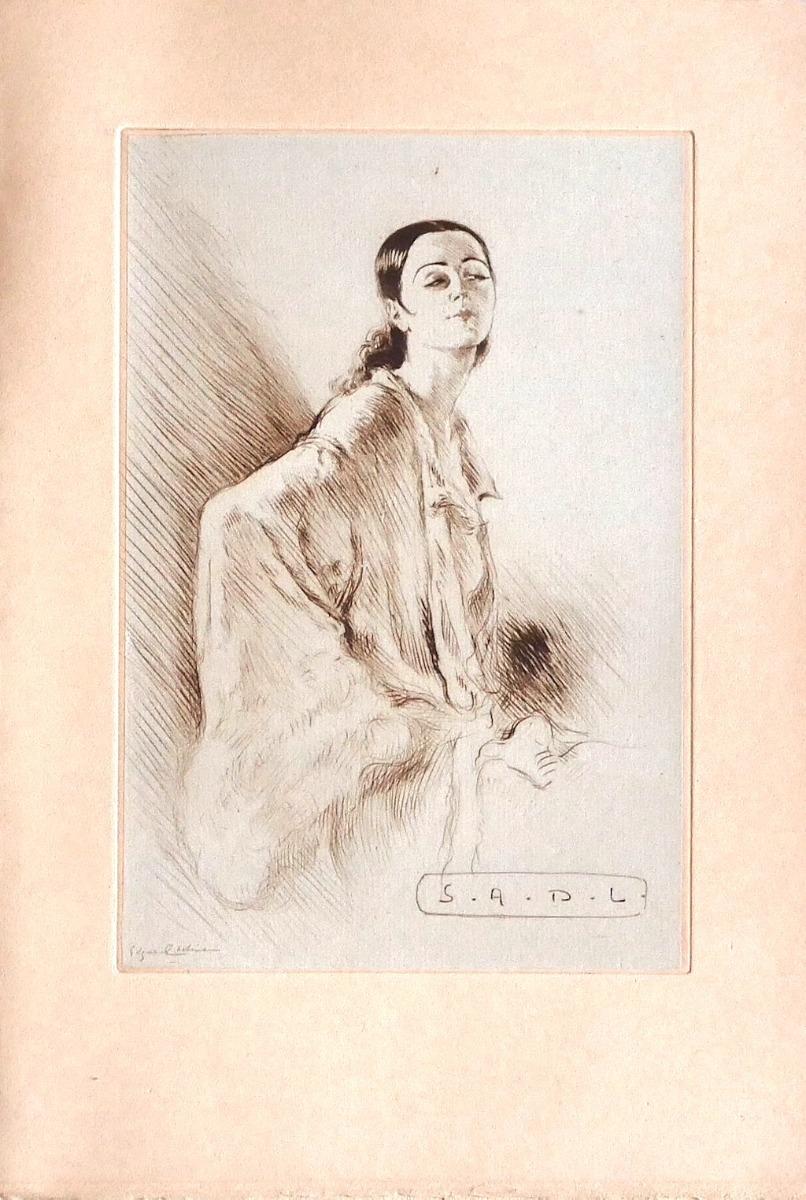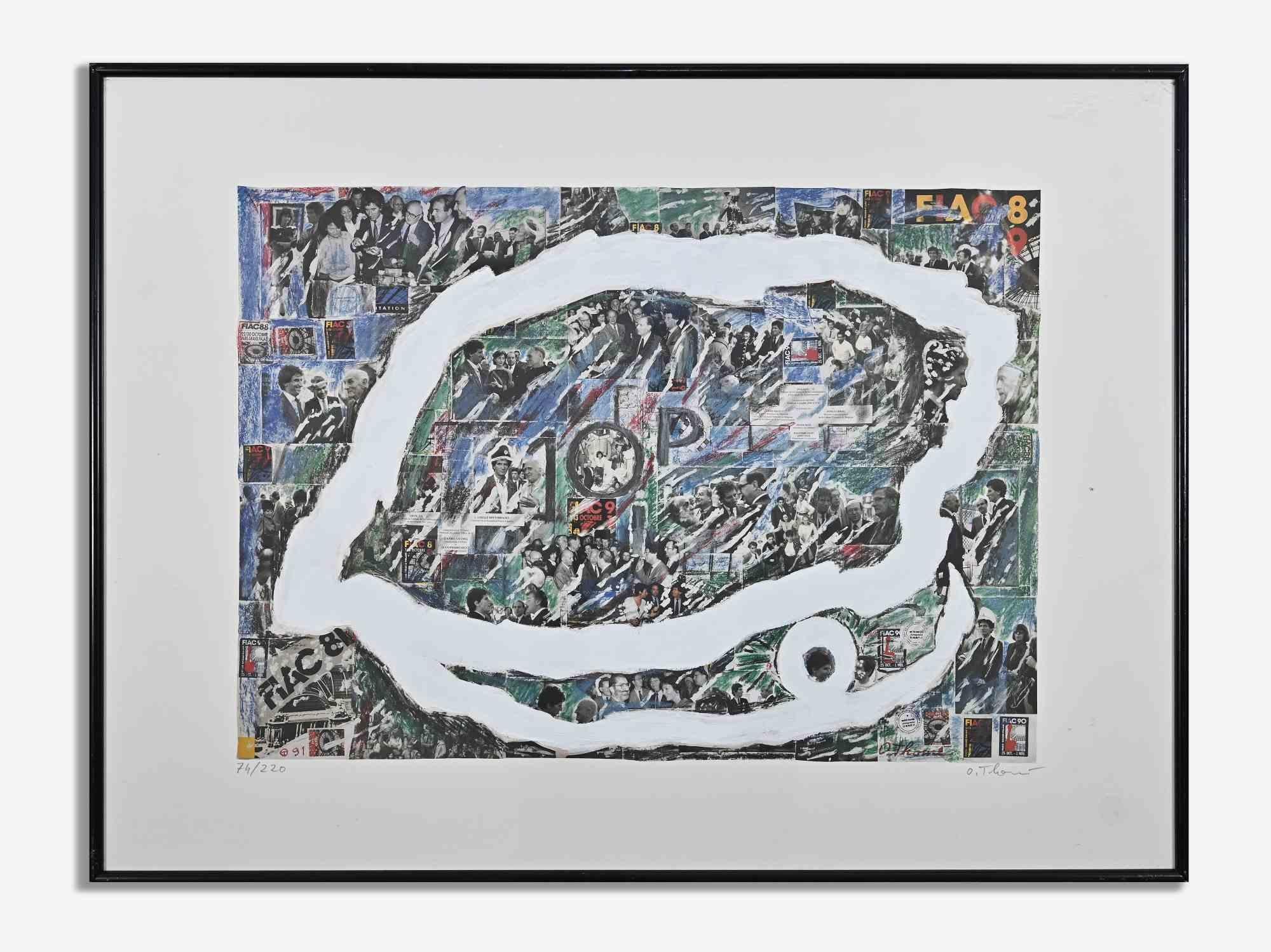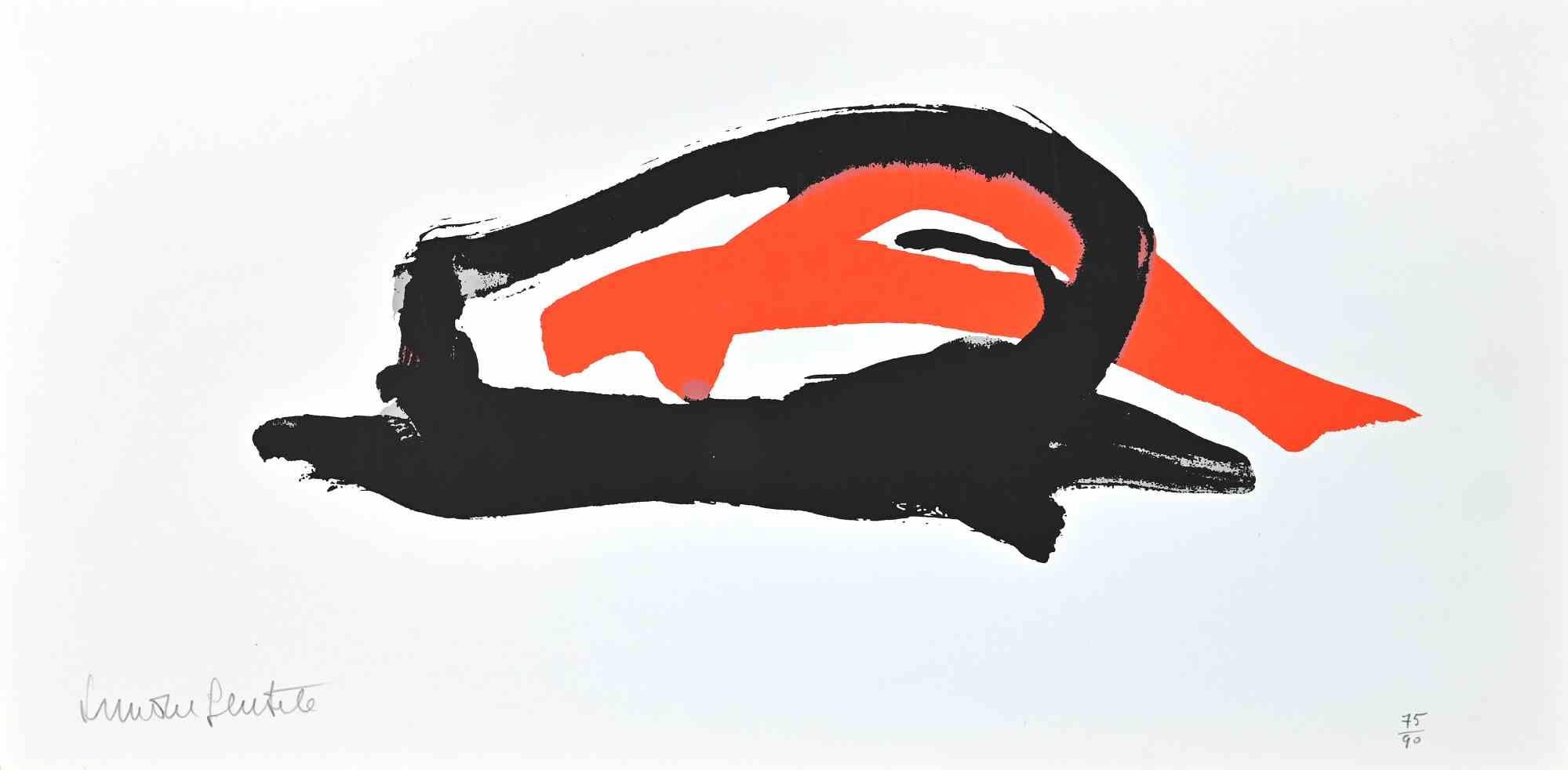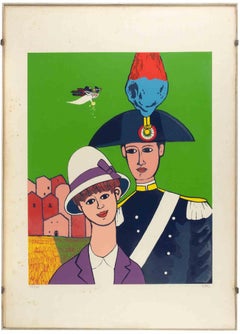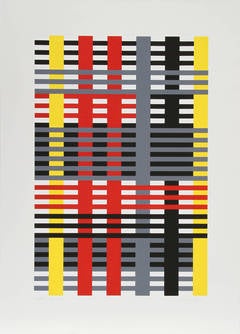
Study for unexecuted Wall Hanging (Bauhaus)
View Similar Items
Anni AlbersStudy for unexecuted Wall Hanging (Bauhaus)1984
1984
About the Item
- Creator:Anni Albers (1899-1994, German)
- Creation Year:1984
- Dimensions:Height: 27 in (68.58 cm)Width: 19.5 in (49.53 cm)
- Movement & Style:
- Period:
- Condition:
- Gallery Location:Long Island City, NY
- Reference Number:1stDibs: LU466159002
Anni Albers
As mesmerizing as Anni Albers’ weavings and prints are, her art represents only a fraction of her achievement. In addition to being one of the most important textile artists of the 20th century, she was a designer, writer and teacher.
Albers was born Annelise Fleischmann in 1899 to a well-to-do Jewish family in Berlin. She studied at the School of Applied Art in Hamburg and then attended the Bauhaus, the utopian workshop founded in Weimar in 1919 by architect Walter Gropius.
The school envisioned a unity of art and design, with the goal of training designers and artisans who could create objects both functional and artistic for mass production. At the Bauhaus, where women’s choices for study were limited, the aspiring Albers ended up in the weaving workshop. Although she initially perceived the discipline as unserious, once she had a thread in hand, she was obsessed.
“I heard Paul Klee speak, and he said to take a line for a walk, and I thought, ‘I will take thread everywhere I can,’” she once told Nicholas Fox Weber, executive director of the Albers Foundation.
At the Bauhaus, Anni met and married fellow student Josef Albers, who would later become a celebrated color theorist and painter. His “Homage to the Square” paintings, which explored the relationships between colors, are now considered modernist masterpieces, and his treatment of color was crucial to the development of the Op art movement.
After graduating in 1930, Anni and Josef both became teachers at the Bauhaus, but when the Nazis came to power, the school was shut down. In 1933, fleeing the Nazis, the couple emigrated to the U.S., where they both became teachers at Black Mountain College, in North Carolina.
Black Mountain, which rejected educational norms and was known for its free-spirited atmosphere, produced many luminaries of modern American art — among them Robert Rauschenberg and Cy Twombly, both students of the Alberses’. In addition to teaching, Anni continued her own artistic practice, making what she called “pictorial weavings”: abstract wallhangings having the same formal qualities as a painting.
The Alberses were fascinated by Latin America even before they crossed the Atlantic, so from North Carolina, they made numerous road trips to Mexico and Peru to collect pre-Columbian art. The influence of the ceramics and textiles the couple discovered in their travels is clear in Anni’s work yet her approach to weaving was unorthodox.
Albers incorporated unusual materials such as cellophane and metallic thread. She intertwined linked threads in innovative ways and added knots as artistic elements, as in “Dotted” Weaving (1959). She created studies using corn kernels, grass, twisted paper, lines made with a typewriter and pin pricks.
In addition to her art pieces, Anni designed many functional textiles for mass production. In 1949, Gropius commissioned her to create fabrics for the Harvard dormitories he designed. Shortly afterward, she was commissioned to design fabrics for the furniture company Knoll. In the late ’50s, Anni began publishing books: On Designing, in 1959, and On Weaving, in 1965.
In her 60s, when it became difficult for her to operate a loom, Anni turned her energies to making prints. Beyond the increased recognition of weaving as an art form, another reason for the renewed interest in Anni’s work is that art history has now turned its lens on women artists who were previously overlooked.
Find Anni Albers rugs, wall decor and original prints on 1stDibs.
- Artichoke, Large Tapestry by Charles ChamotBy Charles ChamotLocated in Long Island City, NYArtist: Charles Chamot, Peruvian/American (1951) Title: Artichoke Year: 1979 Medium: Woven Wool Tapestry, signed and numbered on label, verso Edition: 1/6 Size: 84 x 72 inchesCategory
1970s Modern More Art
MaterialsTapestry, Wool
- No. 2 from "Als Mestres de Catalunya, " Lithograph by Antoni TapiesBy Antoni TàpiesLocated in Long Island City, NYThis lithograph was created by Catalan artist Antoni Tapies. Tàpies started as a surrealist painter, and his early works were influenced by Paul Klee and Joan Miró. However, he soon became an informal artist, working in a style known as pintura matèrica, in which non artistic materials are incorporated into the paintings. This lithograph comes from the Als Mestres de Catalunya...Category
1970s Modern Abstract Prints
MaterialsLithograph
- Modern Abstract Woodcut c1928By John TandyLocated in Long Island City, NYJohn Tandy, painter and stage designer, studied at the Architectural Association before becoming a student at Leon Underwood's Brook Green school and la...Category
1920s Modern Abstract Prints
MaterialsWoodcut
- Modern Abstract Woodcut c1928By John TandyLocated in Long Island City, NYJohn Tandy, painter and stage designer, studied at the Architectural Association before becoming a student at Leon Underwood's Brook Green school and later studying at the Grosvenor ...Category
1920s Modern Abstract Prints
MaterialsWoodcut
- "Outing, " Mezzotint by Kyu-Baik Hwang, circa 1972By K.B. (Kyu-Baik ) HwangLocated in Long Island City, NYThis mezzotint was created by Korean artist K.B. Hwang. Hwang's soft lighting and colors, at once vivid and subdued, depict familiar objects in surreal settings. After moving to New ...Category
1970s Modern Abstract Prints
MaterialsMezzotint
- Maravillas con Variaciones Acrosticas en el jardin de Miro (Number 22)By Joan MiróLocated in Long Island City, NYArtist: Joan Miro, Spanish (1893 - 1983) Title: Maravillas con Variaciones Acrosticas en el jardin de Miro (Number 22) Year: 1975 Medium: Lithograph, signed ...Category
1970s Modern Abstract Prints
MaterialsLithograph
$1,200 Sale Price20% Off
- Zodiac - Lithograph by Mario Padovan - 1976By Mario PadovanLocated in Roma, ITZodiac is a contemporary artwork realized by Mario Padovan in 1976. Mixed colored lithograph. Hand signed and dated on the higher margin. Numbered on the higher left margin. Editi...Category
1970s Modern Abstract Prints
MaterialsLithograph
- Carabiniers - Lithograph by Dipas - 1970sLocated in Roma, ITCarabiniers is a contemporary artwork realized by the artist Dipas in the 1970s. Mixed colored lithograph. Hand signed on the lower right margin. Numbered on the lower left margin...Category
1970s Modern Abstract Prints
MaterialsLithograph
- Bertoia — Mid-Century Visionary Abstraction, UniqueBy Harry BertoiaLocated in Myrtle Beach, SCHarry Bertoia, Untitled (Abstraction), monotype, c. 1960, a unique impression. Signed 'HB' in pencil, lower right sheet corner, verso. Inscribed '1852' (the artist’s inventory number) in pencil, lower right sheet corner, recto. A superb, painterly impression, on cream wove Japan paper, the full sheet, in excellent condition. Unmatted, unframed. Sheet size 12 x 39 inches (300 x 990 mm). Provenance: Val Bertoia; Private Collection; Rago Auctions, Lambertville, NJ. Literature: 'Harry Bertoia: Monoprints,' Nancy N. Schiffer, Schiffer Publishing LTD, 2011; pg. 253. This work is included in the Harry Bertoia Foundation digital resource, Harry Bertoia Catalogue Raisonné, number TD.MO.1584. ABOUT THE ARTIST Harry Bertoia (1915-1978) was a visionary Italian-American artist, sculptor, and designer. Born in San Lorenzo, Italy, Bertoia immigrated to the United States with his family at fifteen, settling in Detroit, Michigan. From an early age, Bertoia demonstrated a keen interest in art and design, studying painting and drawing at the Cass Technical High School in Detroit. Later, he attended the Cranbrook Academy of Art in Bloomfield Hills, Michigan, where he studied under renowned designers Eliel Saarinen and Charles Eames. At Cranbrook, Bertoia first began to explore the possibilities of working with metal, a medium that would come to define his artistic career. In the 1940s, Bertoia moved to California to work for Charles and Ray Eames, contributing to the development of innovative molded plywood furniture. However, his experimentation with metal wire sculpture would ultimately catapult him to international acclaim. Bertoia's iconic "Sonambient" sculptures, consisting of delicate metal rods arranged in various configurations, created ethereal sounds when touched or moved, transforming the act of sculpture into a multisensory experience. Bertoia's talent and innovation caught the attention of Florence Knoll, the founder of Knoll Associates, a leading furniture design company. In 1950, Bertoia began collaborating with Knoll, producing a series of iconic wire chairs that became emblematic of mid-century modern design. His "Diamond Chair," with its geometric form and airy construction, remains a classic of modern furniture design. Bertoia continued to explore sculpture as a means of artistic expression, experimenting with new forms and materials. His work was characterized by organicism and fluidity, with forms that evoked natural phenomena such as waves, leaves, and clouds. A decade before Harry Bertoia began creating three-dimensional sculpture, he dedicated his creative efforts to producing experimental prints at the Cranbrook Academy in Bloomfield Hills, Michigan, pursuing a passion that would continue for the rest of his life. With these spontaneous works, he worked intuitively, testing different tools and techniques to achieve his desired effects. Rather than using a traditional mechanical pressing process, he would apply ink to a glass or smooth Masonite plate with a sheet of paper laid directly on top. Then, tools such as brayers, dog hair brushes, styluses, and different parts of his hands were employed to draw or “press” the images on the back of the sheet. Rice paper was typically used due to its semi-translucent nature, offering Bertoia limited visibility of the effects of his experimentation, but ultimately, the unpredictable nature of the process was an integral aspect of the results, which never ceased to delight him. Each work was a singular composition with abstract imagery ranging from linear, structural compositions to fantastic surrealistic forms to poetic tonal landscapes. He received little input from other artists, developing his unique vision with rare purity and a deep personal resonance. From his first year of printmaking in 1940, Bertoia quickly amassed an extensive collection of unique works. The compositions were strongly tied to the non-objective movement, which, while popular in Europe, was still in its nascent stages in the US. There were few proponents of this new art form to be found in the 1940s, and it was Hilla Rebay, then Director of the Guggenheim Museum of Non-Objective Art, who gave Bertoia the encouragement and promotion he needed. In 1943, Bertoia sent approximately 100 monotypes to Rebay for review. After receiving the prints, she responded with a surprising offer to buy them all. Rebay then began including them in the museum’s exhibitions. The Guggenheim shows succeeded in putting Bertoia’s name out into the world. He began exhibiting his works regularly at the Neierndorf Gallery in New York and was provided a stipend to ensure a steady supply of prints until Karl Neierndorf died in 1947. By the 1950s...Category
1960s American Modern Abstract Prints
MaterialsMonotype
- Les Portraits Imaginaires: One PlateBy Pablo PicassoLocated in London, GBLithograph in colours, 1969, on wove paper, with the artist's printed signature as issued, numbered from the French edition of 250 and inscribed with an ‘F’(there was also an America...Category
1960s Modern Abstract Prints
MaterialsLithograph
- Les Portraits Imaginaires: One PlateBy Pablo PicassoLocated in London, GBLithograph in colours, 1969, on wove paper, with the artist's printed signature as issued, inscribed ‘Hors Commerce’, aside from the French ‘F’ edition o...Category
1960s Modern Abstract Prints
MaterialsLithograph
- Ben Nicholson, Fragment of Tuscan Cathedral: Original Etching from 1966By Ben NicholsonLocated in Hamburg, DEBen Nicholson (British, 1894-1982) Fragment of Tuscan Cathedral, 1966 Medium: Etching on BFK Rives paper (loose within the original paper justification sleeve) Dimensions: 12 4/5 × 1...Category
Mid-20th Century Modern Abstract Prints
MaterialsEtching
Recently Viewed
View AllRead More
Chryssa’s 1962 Neon Sculpture Was Way ahead of the Art-World Curve
By working with lettering, neon and Pop imagery, Chryssa pioneered several postmodern themes at a time when most male artists detested commercial mediums.
7 Exciting Works by Female Artists from the RoGallery Auction
Prints by these modern and contemporary visionaries are relatively affordable — for now.
